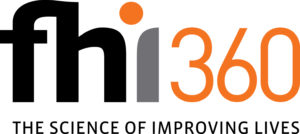Q&A with Future Workforce Now Project Leaders
On July 6, the National Governors Association, FHI 360 and Fab Foundation published Reimagining Workforce Policy in the Age of Disruption: A State Guide for Preparing the Future Workforce Now. The Guide and accompanying website are the culmination of the Future Workforce Now initiative, and presents policymakers with three transformational objectives and ten policy pathways to prepare workers for success in the age of disruption.

While the Guide was originally written through the lens of technological disruption, COVID-19 has since introduced an entirely new state of disruption – affecting learning and work and accelerating trends in automation across all sectors. To share more about how the Guide can be used to help policymakers transform education and workforce systems to respond to these trends, two of the Future Workforce Now project leaders, Ivan Charner, senior advisor FHI 360 United States Business Unit, and Rachael Stephens, director of the Workforce Development and Economic Policy Program at the NGA Center for Best Practices, sat down for the following interview.
Can you provide some background behind the Future Workforce Now initiative and share why your organization was motivated to launch this project?

IVAN: My colleagues at FHI 360 and the Fab Foundation felt an urgent need to examine and understand how technology and other disruptions impact the workforce, now and in the future. Together, we approached NGA and the three partner organizations launched the Future Workforce Now Initiative in 2018. We brought together more than 150 national and international experts and state leaders to develop the policy pathways, transformational objectives and policy options that are detailed in the State Guide for Preparing the Future Workforce Now and accompanying website.
RACHAEL: Technology has been changing in this generation more rapidly than in any other, and governors across the country are looking for tangible steps to help workers thrive in this environment. NGA knew this partnership with FHI 360 and the Fab Foundation would help us connect the broad, theoretical conversations taking place about ‘the future of work’ with tangible, meaningful policy action states can take today. I think we’ve really accomplished that with this Guide – and given the economic impacts of COVID-19, it’s a great resource to help governors craft smart and intentional response strategies that also position them to address longer-term trends.
How does your team define ‘technological disruption’? How has COVID-19 changed the effects of disruption that you identify in the Guide?

RACHAEL: We define a ‘technological disruption’ as a radical change to a system or major aspect of civic life, such as changes to work, workforces, or workplaces, caused by the adoption of new technologies. These types of disruptions were already happening more rapidly than in any prior generation, and COVID-19 has accelerated these changes. Americans remain worried about having their jobs automated away and many of the most at-risk jobs tend to be low-wage and disproportionately held by people of color and new Americans. Without any policy intervention, there’s a real risk of widening existing inequities in the workforce. But more than being automated away, most jobs will still exist – but the skills required for those jobs change substantially as new technologies are introduced. This is why it is urgent that we develop better digital and technological literacies — as little as one fifth of Americans are considered digitally literate today — and that we cultivate the ‘uniquely human’ skills that machines cannot yet replace.
IVAN: One of the most dramatic examples of how the pandemic has accelerated technological disruption is in education. Most teachers were not prepared to teach online and many students—particularly Black, minority, and economically disadvantaged students—don’t have access to essential technological and digital tools to participate in and benefit from online learning. As Rachael said, today’s learners need the skillsets that set them apart from machines, including leadership, creativity and critical thinking. To develop these skills in an entirely digital environment presents real challenges for educators and requires new investments in teacher training and professional development.
The Guide finds that the current policy infrastructure for education, training and supporting workers is not prepared to meet the rapidly changing needs of workers and employers. Can you share more about this? What are the recommendations that your team makes to state leaders to build the type of policy infrastructure that is needed?
IVAN: First, we need to stop seeing education as something that ends when you graduate and to understand the importance of continuous lifelong learning. States need policies that encourage employers to embrace demand-driven training programs for workers of all ages so that no one is left without the skills to do their job. For future workers, states need policies that close technology and digital literacy gaps and promote skills like critical thinking, empathy, decision making, collaboration, and planning. States and employers also need to collaborate to create an accessible path for workers to gain stackable and portable credentials.
RACHAEL: Lifelong learning is not a brand-new concept by any stretch but making it an accessible reality for most Americans is easier said than done. We identified 10 policy pathways for cultivating a lifelong learning ecosystem, building an agile, technologically resilient workforce, and ensuring access to supports like childcare that help people take advantage of work and learning opportunities. Governors play a critical role in leading this type of systems change, which requires introducing new programs and sunsetting old infrastructure that are not aligned with the state’s vision. To help guide states through this process, we’ve included a roadmap so that every state, no matter where they are in terms of politics, budget, or current programming, can find a strong next step for themselves in each pathway in this guide.
COVID-19 has shown a spotlight on the value of having an available, skilled workforce in critical sectors like healthcare. How can this Guide help leaders in those sectors fill gaps they may in a skilled workforce?
RACHAEL: One thing we were intentional about in compiling this Guide was making sure that it could serve industry leaders and employers, as well as community-based organizations and others who build out talent pipelines for high-demand sectors. The three transformational objectives outlined in the guide – and most of the 10 policy pathways to achieve those objectives – include a clear role for private sector partners. This Guide is especially useful for leaders in sectors facing serious talent pipeline issues to get a sense of what types of policy and programmatic innovations governors and states are prioritizing, and how they can better partner with states.
IVAN: The Guide provides a roadmap for state policymakers and practitioners to respond to workforce gaps in areas like health care, advanced manufacturing and information technology sectors. Industry leaders don’t need to wait for a governor or agency to come to them with these proposals; they can go to their state leaders with these ideas, too.
As we approach the fall, there is a lot of uncertainty about how education will be delivered and how to best adapt teaching and learning amid COVID-19. What recommendations does the Guide offer for how to build resilient learners and workers in this new learning environment?
IVAN: The Guide offers several recommendations which can be adapted to these new circumstances. For example, states can provide K-12 teachers with immediate professional development for teaching to close technological and digital literacy gaps, and respond to academic, social-emotional learning, and equity needs. They also need to develop better systems to work with employers and education to develop short-term training programs, and provide tuition assistance, paid education leave, and support to learners and workers when on furlough. Finally, we put a big emphasis on information – making labor-market information, advisory and training programs available to everyone regardless of employment status or ability to pay is essential.
RACHAEL: These are all absolutely key recommendations for adapting to our current environment. We’re also seeing action around competency-based education and hiring, which helps break down barriers to educational attainment and (re)entry into the labor market for millions of talented Americans who aren’t benefitting from current systems and norms. Scaling use of high-quality online platforms for learning and credentialing is also critical, as is ensuring broadband access to the millions across the country without access to online resources. We also need to ensure access to some sort of safe childcare to help people go back to work when they’re safely able to do so. If people can’t have these types of foundational needs met, a lot of already-disadvantaged families will be set back even further. When it comes to longer-term needs around digital and technological literacies, one of the innovations we highlight in the Guide is integrating advanced technologies into learning environments.
Equity is a recurring theme throughout this Guide. How should leaders define equity at the systems level especially in this new economic environment? What are some of the recommendations that your team provides for ensuring equitable outcomes for students and workers?
IVAN: The COVID-19 pandemic and Black Lives Matter movement have had a multiplier impact on work, workers and workplaces. The impacts have been greatest on Black and other minority groups and the economically disadvantaged. Included in our Roadmap for Systems Change are several strategies to build equity including creating diverse leadership teams; assessing the impact of disruptions on populations who are at greatest risk and addressing disparities in credential- and skills-based attainment. We also highlight the importance of targeting communications to these groups and implementing feedback strategies that include Black, other minority, and economically disadvantaged groups.
RACHAEL: Leaders at all levels need to put equity front and center in designing policy and programs, starting with how they think about the desired outcomes and results. This requires having a diverse range of voices in your strategic design process to develop the right goals and to accurately assess the barriers people face that might get in the way of those goals. If, as an American society, we’re serious about achieving this equity in access, we need to get serious about ensuring that traditionally oppressed and underserved communities have access to things like child care, financial support, housing, and advising services to help them navigate their options. We’re really proud that this Guide includes, as one of the three transformations to prepare the future workforce, the comprehensive supports needed to achieve equity in education and employment.
Ivan Charner is the senior advisor in the FHI360 United States Business Unit and former Director of the FHI 360 National Institute for Work and Learning. Rachael Stephens is the director of the Workforce Development & Economic Policy Program for the National Governors Association Center for Best Practices. This interview was conducted by Katherine Ash, Future Workforce Now Consultant and lead author of the State Guide for Preparing the Future Workforce Now.












